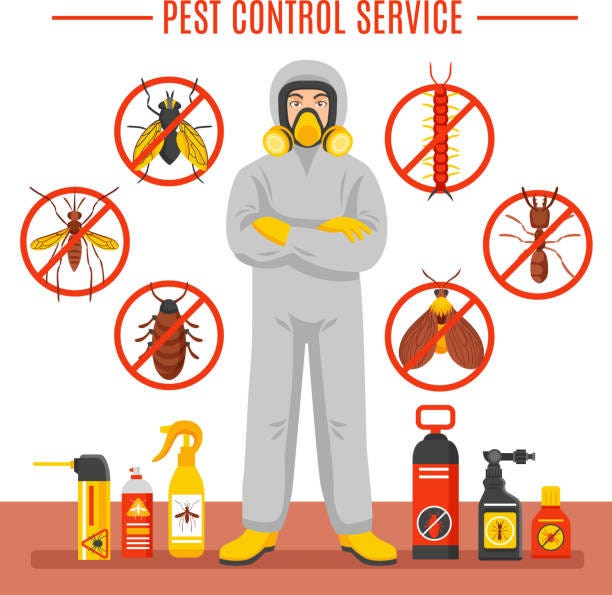Bed Pest Treatment Failure: Contrasting Chemical Vs. Non-Chemical Solutions
In the world of pest control, especially when taking care of the consistent concern of bed insects, the selection in between chemical and non-chemical treatment options can be a pivotal one. Both methods provide distinct benefits and disadvantages, affecting elements such as performance, security factors to consider, and overall cost. By checking out the nuanced details of each technique, a more clear understanding of which course to seek in attending to a bed pest infestation can be acquired.
Efficiency of Chemical Therapies
Chemical therapies for bed insect problems have been commonly acknowledged for their fast and potent efficiency in eliminating these insects. When taking into consideration the efficiency of chemical treatments, it is critical to understand that they can provide a fast and complete remedy to a bed pest issue.
Additionally, chemical treatments have the benefit of offering recurring results, implying that they can remain to remove bed bugs even after the first application. This recurring action is especially useful in combating any kind of prospective re-infestations. In addition, the fast action of chemical treatments can bring alleviation to people dealing with serious bed pest problems, enabling them to restore control of their home rapidly.
Safety And Security Problems With Chemical Solutions
One essential aspect that requires cautious factor to consider when utilizing chemical solutions for bed insect treatment is ensuring the safety of occupants and the environment. Direct exposure to certain chemicals utilized in bed pest treatments can lead to breathing issues, skin irritability, or various other unfavorable responses, particularly in people with pre-existing conditions or level of sensitivities.
Moreover, the environmental impact of chemical remedies is an additional substantial factor to consider. Some pesticides utilized in bed insect therapies may be damaging to advantageous insects, wild animals, and ecosystems if they leach right into the soil or water systems. It is vital to make use of chemical therapies sensibly, adhering to security standards, and thinking about less harmful choices to alleviate these dangers and ensure the efficient and safe management of bed pest infestations.
Advantages of Non-Chemical Strategies
Considering the potential safety concerns and environmental influence related to chemical services for bed insect therapy, discovering non-chemical techniques presents an appealing option with numerous distinctive benefits. Non-chemical methods supply a much safer choice for homes, especially those with people, children, or pet dogs sensitive to extreme chemicals. These methods get rid of the dangers of direct exposure to harmful compounds, reducing the possibility for adverse health and wellness results. Additionally, non-chemical treatments are eco-friendly, as they do not add to air or water pollution, making them a lasting selection for parasite control.
Additionally, non-chemical solutions can be reliable in targeting bed insects, consisting of hard-to-reach areas where chemical therapies may not penetrate. Techniques such as warmth treatment, vacuuming, vapor cleansing, and bed mattress encasements give comprehensive removal without using unsafe chemicals. Furthermore, non-chemical approaches can be much less turbulent, requiring marginal preparation and allowing for quicker reentry into dealt with locations. On the whole, selecting non-chemical bed insect treatment techniques not just focuses on safety and environmental management however also guarantees thorough and efficient bug control.
Limitations of Non-Chemical Treatments

In addition, non-chemical treatments this link frequently require numerous applications to achieve successful removal. This can be time-consuming and may not constantly guarantee total elimination of all bed insects and their eggs, specifically in covert or hard-to-reach areas.
Moreover, the success of non-chemical therapies heavily depends on correct implementation and thoroughness, which can be testing for individuals without professional expertise. Insufficient application of non-chemical techniques might cause insufficient obliteration, bring about persistent invasions and the demand for added treatments.
As a result, while non-chemical therapies have their benefits, it is necessary to recognize these limitations and consider them when establishing the most effective method for handling bed insect problems.
Cost Comparison: Chemical Vs. Non-Chemical Options
Provided the important source constraints linked with non-chemical treatments, a necessary element to assess in the context of bed insect administration is the price contrast between chemical and non-chemical options. In contrast, non-chemical therapies like warmth treatment or steam can be more expensive, with costs ranging from $1,000 to $6,000 for an entire home. While the preliminary expense of chemical therapies may seem reduced, multiple therapies may be needed to completely remove the invasion, potentially raising the general price.
Conclusion

Thinking about the potential safety issues and environmental effect linked with chemical services for bed insect therapy, checking out non-chemical methods presents a promising alternative with several distinct advantages.Provided the constraints linked with non-chemical therapies, a necessary element to review in the context of bed bug management is the cost contrast in between chemical and non-chemical choices. In comparison, non-chemical therapies like warmth treatment or heavy steam can be much more expensive, with pest control service provider expenses ranging from $1,000 to $6,000 for an entire home. While the preliminary price of chemical therapies might seem lower, several treatments might be needed to completely get rid of the invasion, potentially boosting the general price.In verdict, when contrasting chemical and non-chemical bed pest therapy choices, it is necessary to take into consideration performance, security, benefits, constraints, and price.